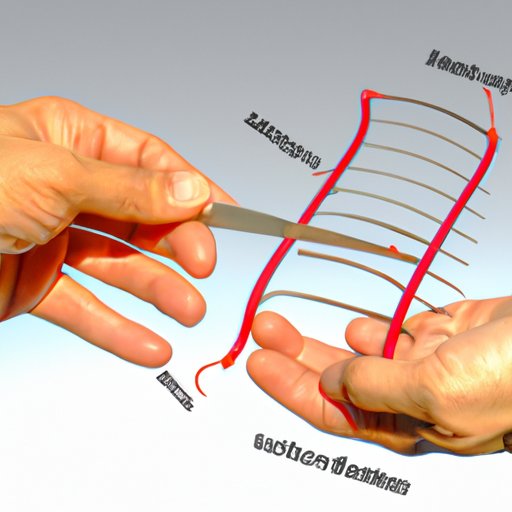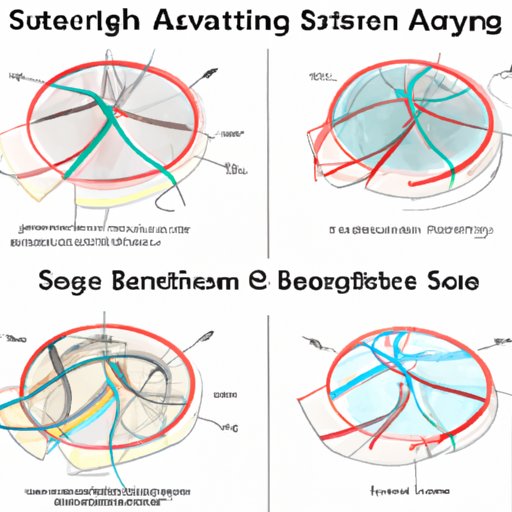Introduction
A stent is a small tube-shaped device that is inserted into a narrowed artery or vein to improve blood flow. It is often used in conjunction with angioplasty or other cardiovascular procedures to treat coronary artery disease, peripheral artery disease, and other conditions that can cause blockages in the arteries. Stents are typically made of metal or plastic, and come in a variety of shapes and sizes depending on where they will be placed and what type of procedure they are being used for.
What Is a Stent Made Of?
Stents are most commonly constructed from stainless steel or cobalt-chromium alloy. They may also be made from polytetrafluoroethylene (PTFE), which is a type of plastic material. The stent’s design and construction vary based on the type of procedure it will be used for and the location of the blockage it needs to address.
How Do Stents Help Improve Blood Flow?
Stents help improve blood flow by providing support to the arterial walls, helping to keep them open. When a stent is placed, it expands and presses against the inside walls of the artery, providing support and keeping them from collapsing. This increases the space within the artery, allowing more blood to flow through. The stent also serves as a scaffold, preventing the plaque and cholesterol deposits that cause blockages from gathering again in the same area.
Examining the Different Types of Stents and Their Uses
There are three main types of stents: bare-metal stents, drug-eluting stents, and bioresorbable stents. Bare-metal stents are the most commonly used and are made of stainless steel or cobalt-chromium alloy. These types of stents are placed within the artery and remain there permanently. Drug-eluting stents are coated with medication that helps reduce the risk of restenosis, which is the narrowing of the artery due to the buildup of plaque and cholesterol deposits. Bioresorbable stents are made of materials that naturally dissolve over time, leaving no trace of the stent behind.

Describing the Process of Placing a Stent
The process of placing a stent involves inserting a small catheter into the artery, which is then guided to the site of the blockage. Once in place, the stent is expanded with a balloon, pressing against the walls of the artery. The balloon is then deflated and removed, leaving the stent in place to provide support and improve blood flow. The entire process usually takes less than an hour and is typically done using a local anesthetic.

Comparing Angioplasty and Stenting Procedures
Angioplasty is another common procedure used to treat blocked arteries and is often performed in combination with stenting. During an angioplasty, a small catheter is inserted into the artery and a tiny balloon is inflated at the site of the blockage. This helps to widen the artery and improve blood flow. Unlike stenting, angioplasty does not leave any permanent devices in the artery, and so it can be reversed if necessary.

Outlining the Benefits of Using a Stent
Using a stent offers a number of benefits, including improved cardiovascular health. A stent can help reduce the risk of heart attack and stroke by improving blood flow to the heart and brain. In addition, stents can help reduce chest pain and shortness of breath caused by blocked arteries. Finally, stents can help improve overall quality of life by allowing people to return to their normal activities sooner.
Discussing Possible Complications and Risks Associated with Stents
Although stents are generally safe, there are some possible complications and risks associated with the procedure. These include bleeding, infection, and restenosis. Restenosis is the narrowing of the artery due to the buildup of plaque and cholesterol deposits. It is important to discuss all of the potential risks and benefits of stenting with your doctor before undergoing the procedure.
Conclusion
Stents are small tube-shaped devices that are inserted into a narrowed artery or vein to improve blood flow. They are usually made of stainless steel or cobalt-chromium alloy, and come in a variety of shapes and sizes depending on the type of procedure they are being used for. Stents offer a number of benefits, including improved cardiovascular health and reduced risk of heart attack and stroke. However, there are also some potential risks associated with stenting, such as bleeding, infection, and restenosis. It is important to discuss these risks and benefits with your doctor before undergoing the procedure.
(Note: Is this article not meeting your expectations? Do you have knowledge or insights to share? Unlock new opportunities and expand your reach by joining our authors team. Click Registration to join us and share your expertise with our readers.)
